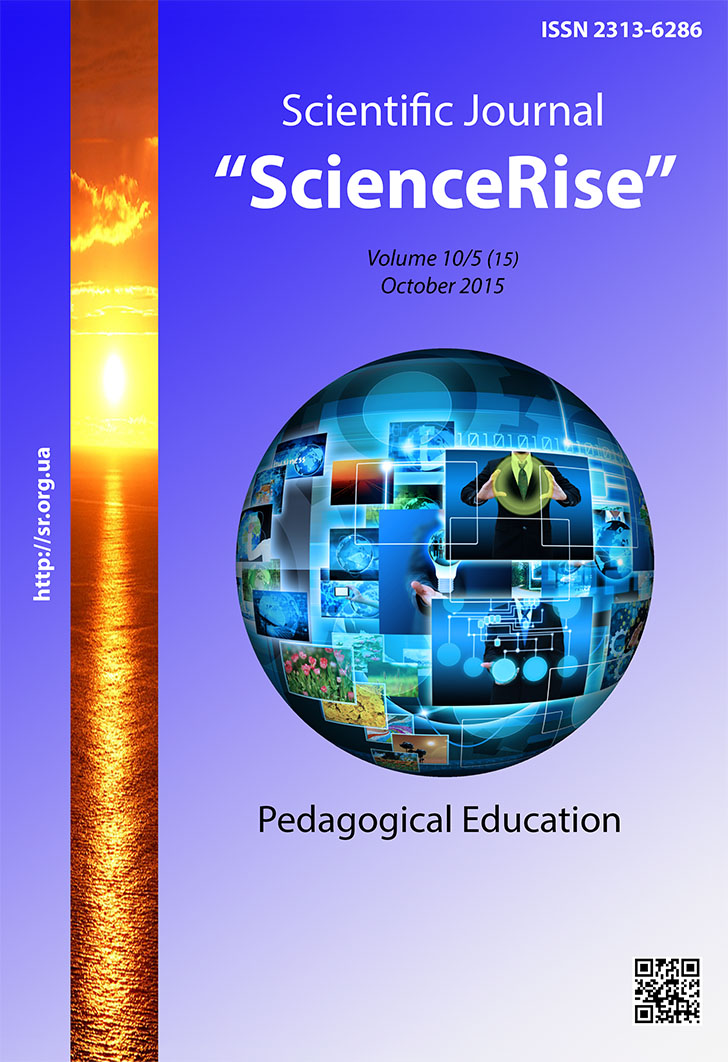Формування виконавської компетентності майбутнього вчителя музичного мистецтва
DOI:
https://doi.org/10.15587/2313-8416.2015.51968Słowa kluczowe:
музично-виконавська компетентність, художньо-інтерпретаційний процес, художньо-інтерпретаційні вміння, технологіяAbstrakt
Здійснено теоретичний аналіз психолого-педагогічних праць, на основі яких уможливлює констатувати, що на сучасному етапі освітній компетентнісний підхід є одним із пріоритетних. Музично-виконавську компетентність визначено як ключову в структурі професійної компетентності. Виявлено основні компоненти музично-виконавської компетентності, зокрема: ціннісно-мотиваційний, когнітивно-знаннєвий, операційно-технологічний, самостійно-творчий. Внутрішнім системоутворювальним фактором музично-виконавської компетентності визначено художньо-інтерпретаційні вміння
Bibliografia
Masol, L. M. (2006). Total artistic education: Theory and Practice. Kyiv, 432.
Andreev, A. L. (2005). Kompetentnostnaya paradigm in education: Experience philosophical and methodological analysis. Pedagogy, 4, 19–27.
Bibik, H. M., Vashchenko, L. S., Lokshina, O. I. et. al; Ovcharuk, A. V. (Ed.) (2004). Competence approach in modern education: international experience and Ukrainian prospects (Library of Educational Policy). Kyiv: "KIS", 112.
Pometun, A. (2005). Competence approach – a key landmark of modern education. Mother School, 1, 65–69.
Stratan-Artyshkova, T. B. (2014). Creative and performing training of future teachers of music: Theory and Practice. Kirovohrad: KSPU V. Vynnychenko, 440.
Bacyn, E. A. (1985). Psychology artistic Creativity. Lychnostnie approach. Moscow: Knowledge, 64.
Hurenko, E. (1985). Yspolnytelskoe art: methodological problems. Novosibirsk. NGK, 86.
##submission.downloads##
Opublikowane
Numer
Dział
Licencja
Copyright (c) 2015 Олена Борисівна Горбенко

Utwór dostępny jest na licencji Creative Commons Uznanie autorstwa 4.0 Międzynarodowe.
Our journal abides by the Creative Commons CC BY copyright rights and permissions for open access journals.
Authors, who are published in this journal, agree to the following conditions:
1. The authors reserve the right to authorship of the work and pass the first publication right of this work to the journal under the terms of a Creative Commons CC BY, which allows others to freely distribute the published research with the obligatory reference to the authors of the original work and the first publication of the work in this journal.
2. The authors have the right to conclude separate supplement agreements that relate to non-exclusive work distribution in the form in which it has been published by the journal (for example, to upload the work to the online storage of the journal or publish it as part of a monograph), provided that the reference to the first publication of the work in this journal is included.

